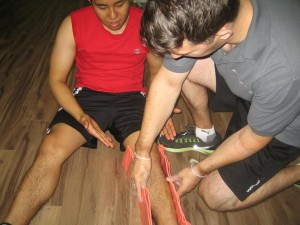Traction involves the use of ropes, weights and pulleys to apply force to the tissues that surround a broken or fractured bone. It is sometimes utilized to keep a broken leg in the right position during the early phases of healing or to alleviate the pain from a fracture while the individual is waiting for surgery.
https://www.youtube.com/watch?v=JS2S4lbteDw
When is traction needed
There are various instances in which traction might be used such as the following:
- Realignment and repair of bone fractures such as a broken leg
- Reduce pain before surgery
It is sometimes utilized to keep a broken leg in the right position during the early phases of healing or to alleviate the pain from a fracture while the individual is waiting for surgery. - Manage bone deformities due to conditions such as scoliosis
- Correct a muscle contracture
What are the types?
Skin
This is carried out while the individual is lying in a hospital bed. It utilizes equipment such as bandages, splints and adhesive tape that are attached to the weights. The pulling force is applied via the soft tissues such as the skin, tendons and muscles. The affected area is pulled in line utilizing a pulley system attached to the bed.
Skeletal
This type is used if a greater force is required. The force is directly applied to the skeleton which means that additional weight can be added without the risk of damaging the adjacent soft tissues. Remember that the skeleton can support up to 12 kg.
Wires, pins or screws are inserted surgically into the bone. This is done using either a local or general anesthetic. Once inserted, the weights are attached so that the affected body part can be pulled into the right position. The length of time the traction is needed depends on how severe the injury is.
Does it work?
Traction is effective in providing brief relief from pain in the initial phases of treatment after trauma. For long-term conditions, there is limited proof to support the use of traction.
Both types of traction were previously applied routinely to the limb of a fractured hip before surgery. Nevertheless, it was discovered in recent studies that this has minimal or no benefit.
Even though both types can be utilized for managing certain forms of fracture, it is not usually required for the minor cases.
Disclaimer / More Information
The information posted on this page on traction is for learning and educational purposes only. To learn more about traction that is used on broken bones and fractures, register for first aid training at one of our training centers located throughout Canada. The training centers are located in Edmonton, Calgary, Red Deer, Vancouver, Kelowna, Surrey, Winnipeg, Toronto, Ottawa and Halifax.


